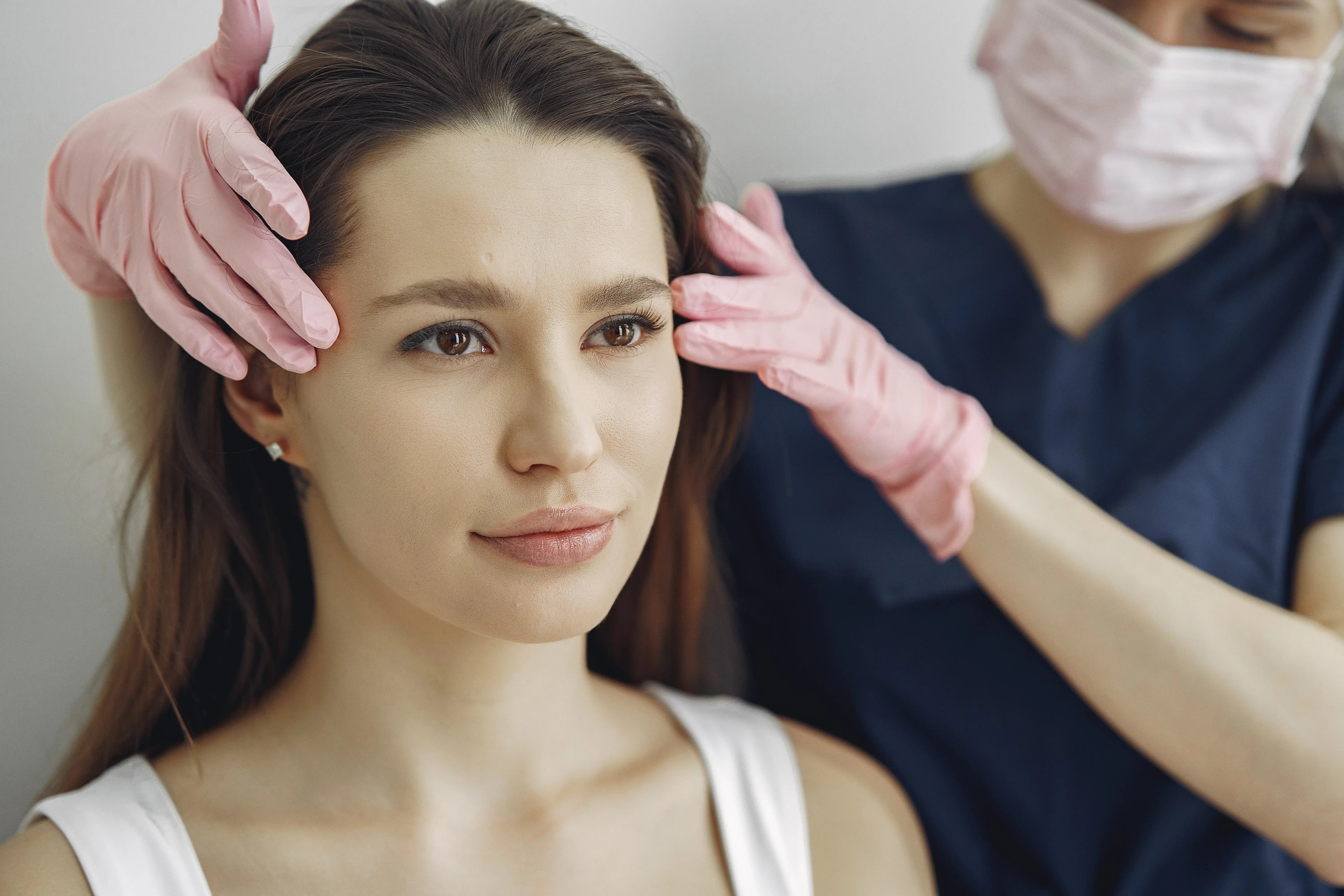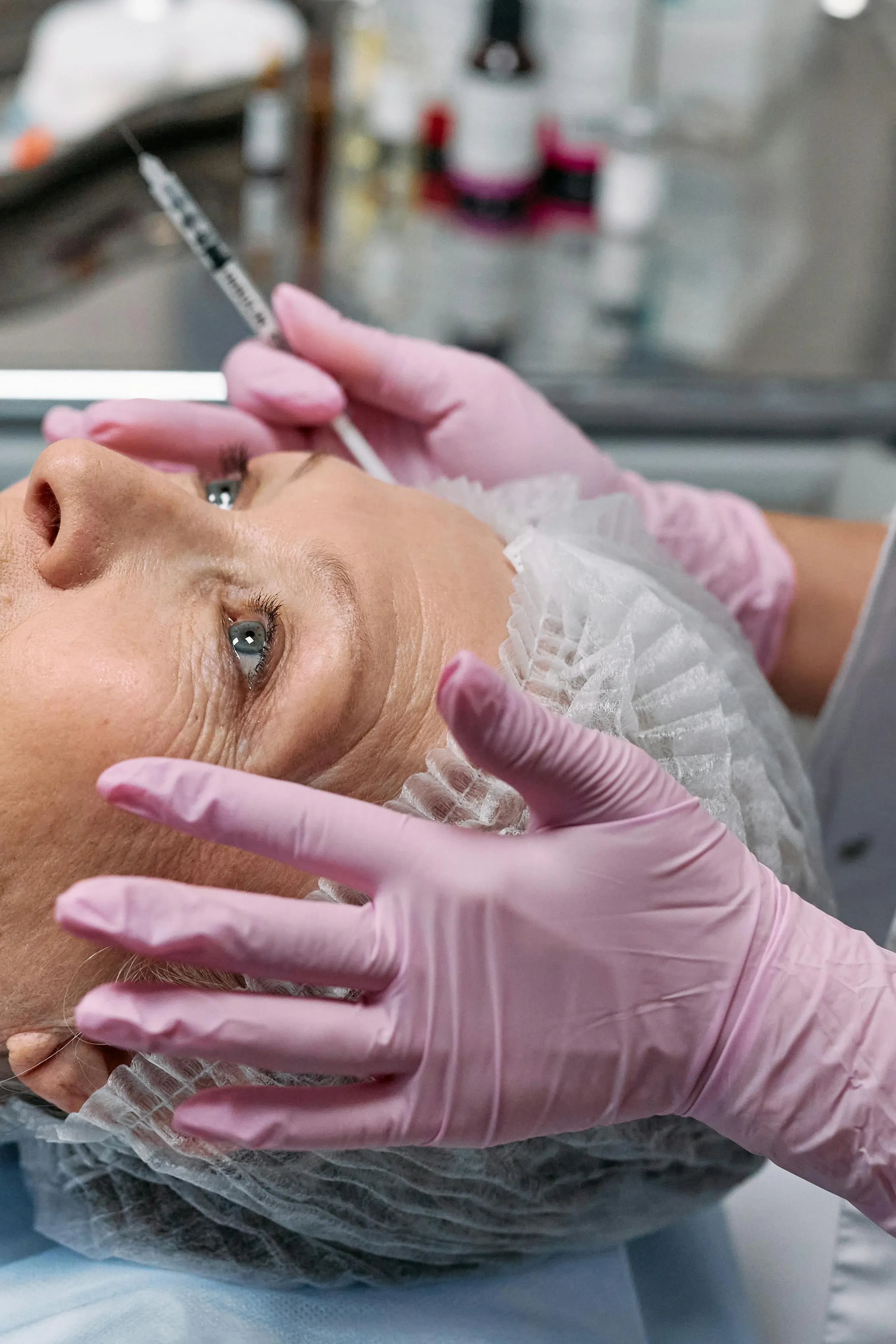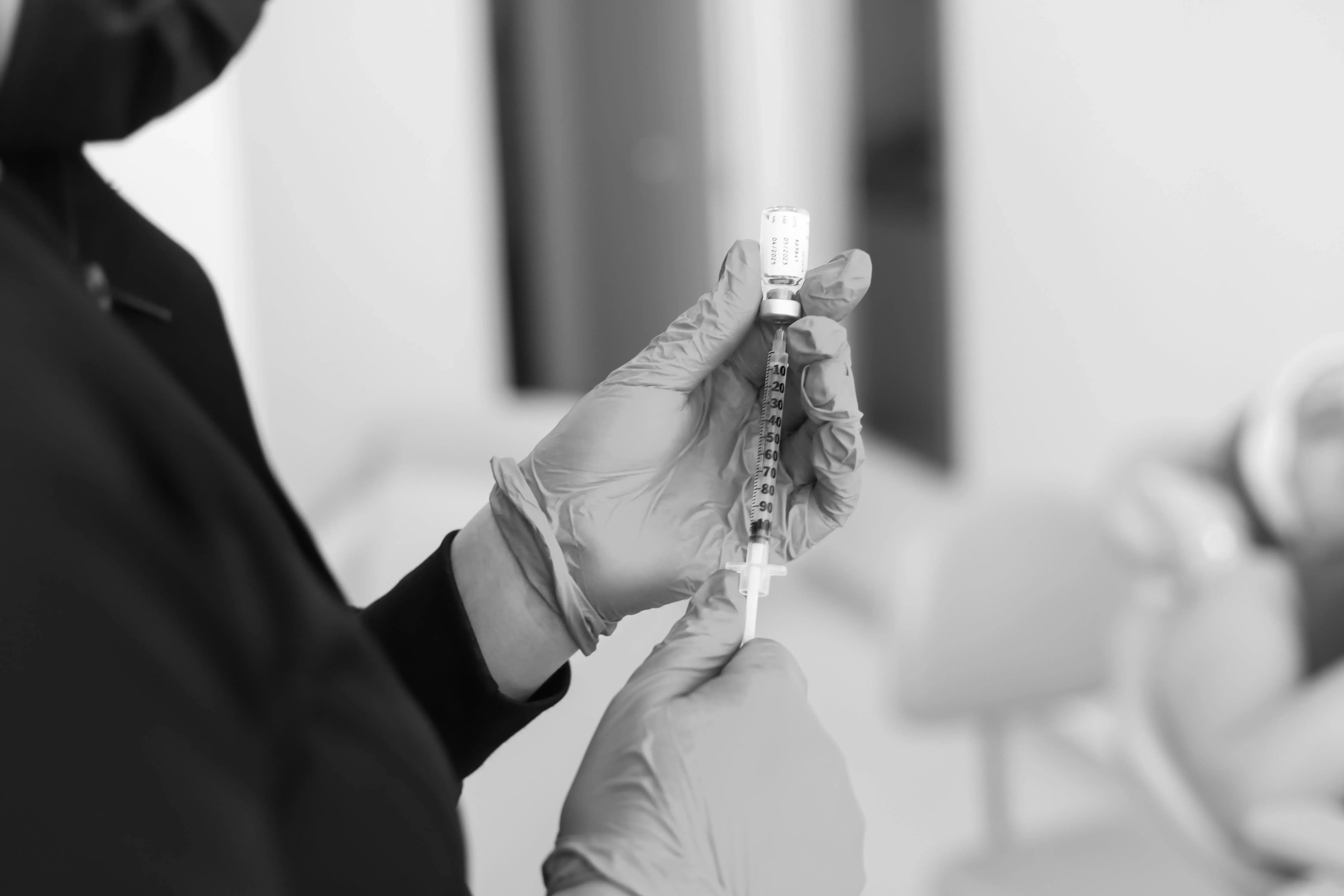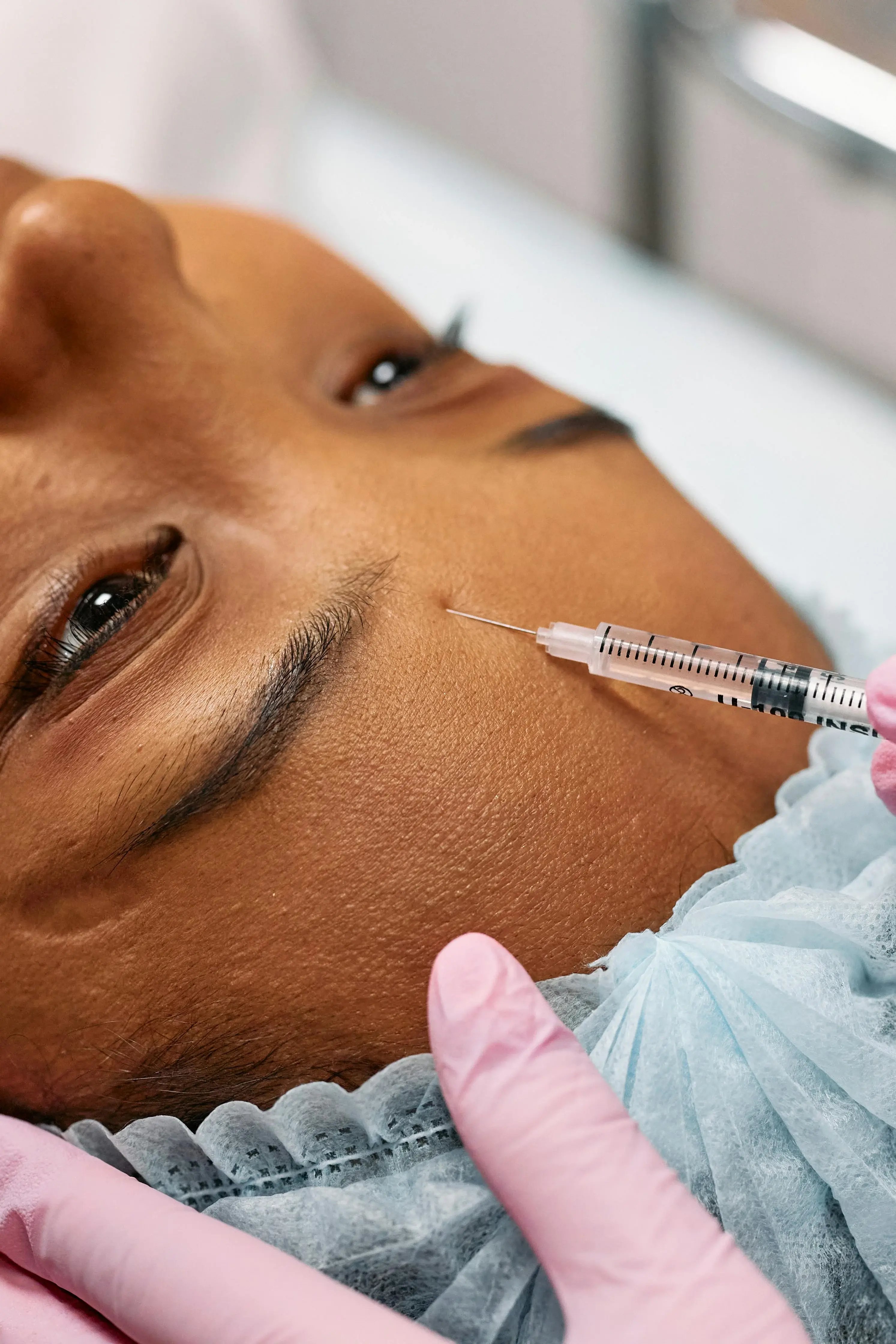Does Botox for Migraines Change Your Face?
For many people considering migraine Botox, one question rises above the rest: does Botox for migraines change your face? It’s a fair concern — after all, Botox is widely known for softening wrinkles and relaxing facial muscles. But when it’s used for chronic migraine relief, the goal shifts entirely from beauty to biology.
This treatment targets pain pathways, not fine lines. And while some patients may notice a smoother forehead or a more relaxed brow, migraine Botox isn’t designed to alter your appearance. In skilled hands, it simply relieves chronic head pain while maintaining your natural expressions.
At aspireMD in St. Catharines, every injectable treatment — medical or cosmetic — is performed with precision and artistry. Our team combines medical expertise with aesthetic insight to deliver results that feel balanced, natural, and authentic. If you’re exploring migraine relief or curious about what Botox might do for you, book a consultation today to speak with one of our experienced professionals.

Understanding Botox for Migraines
Botox (Botulinum toxin A) is a purified protein that works by temporarily blocking nerve signals that cause muscles to contract. When applied for migraines, it calms overactive nerve endings and prevents pain signals from triggering.
Approved by the FDA in 2010, Botox for chronic migraine is typically recommended for those experiencing 15 or more headache days per month. Each treatment involves a series of small injections targeting the muscle groups associated with migraine pain.
It’s the same product used cosmetically, but its purpose and technique differ dramatically. Instead of focusing on wrinkle reduction, the goal is to minimize muscle tension and nerve hyperactivity — helping clients live with fewer migraine days.
At aspireMD, Dr. Jane Burk understands both the therapeutic and aesthetic aspects of Botox. Her expertise ensures every treatment is customized for your comfort, safety, and confidence.
What Is Botox and How Does It Work?
To answer how does botox work for migraines, it helps to know a little neurochemistry. Botox blocks acetylcholine, a neurotransmitter responsible for muscle contractions and some pain transmission. By interrupting that signal, it reduces the release of pain-related chemicals from nerve endings.
Over time, this mechanism lessens migraine frequency and intensity — creating a cycle of relief that builds with consistent treatments.
FDA Approval and Medical Use for Chronic Migraine
Botox’s use for migraines began accidentally: people receiving cosmetic injections noticed their headaches disappeared. Clinical trials confirmed the link, leading to FDA approval. Today, it’s one of the most reliable non-oral preventive therapies for chronic migraines, backed by years of research and client success stories.
How Long the Benefits Last and Why Regular Treatments Matter
Results usually appear after two to three weeks and last about 12 weeks. Regular sessions maintain the effect, preventing nerve activity from returning to baseline. For most people, benefits grow stronger after a few treatment cycles.
At aspireMD, each client receives a tailored plan built around their migraine history and overall wellness. Treatments are spaced appropriately to maintain consistent relief without altering your natural appearance.
Where Do They Inject Botox for Migraines?
The answer is straightforward but highly technical. The injections follow the PREEMPT protocol, a globally recognized treatment pattern developed through years of migraine research.
This method targets 31 to 39 precise points across the head, neck, and shoulders — where migraine pain often begins. The injections are tiny, shallow, and strategically spaced to calm nerve clusters and muscle tension.
Common Injection Sites Around the Head and Neck
Typical areas include:
- The forehead (frontalis): to reduce tension across the brow
- The temples (temporalis): targeting pressure-related pain
- The back of the head (occipitalis): to prevent nerve inflammation
- The neck and shoulders (trapezius and cervical muscles): easing strain that contributes to headaches
Despite overlapping with some cosmetic zones, the injection depth and dosage differ. The goal is migraine prevention, not wrinkle correction.
The PREEMPT Protocol Explained
The PREEMPT method (Phase III Research Evaluating Migraine Prophylaxis Therapy) is the international gold standard for migraine Botox. It ensures consistency and safety, with exact unit counts and mapping. This medical precision allows practitioners like those at aspireMD to deliver predictable, evidence-based relief.
What the Treatment Feels Like (Does Botox Hurt for Migraines?)
Patients often ask, does botox hurt for migraines? The answer is — only slightly. Most describe the sensation as quick pinches or light pressure that subsides almost instantly. The entire session takes about 15 minutes.
At aspireMD, advanced techniques and fine needles keep discomfort to a minimum. Topical numbing can be used, but many clients find they don’t need it at all.

Does Botox for Migraines Change Your Face?
So, does botox for migraines change your face? The short answer: typically not. While Botox does relax certain muscles, the doses and locations used for migraine relief don’t significantly affect facial movement or shape.
Because the injections are distributed broadly — not concentrated on cosmetic zones — most people look exactly the same after treatment. Some may even look subtly refreshed, thanks to the relaxation of forehead tension.
At aspireMD, the focus is always on preserving your natural expression while delivering effective migraine relief.
Why People Worry About Facial Changes
Concerns arise because Botox is synonymous with aesthetics. People fear “frozen” expressions or droopy brows. But migraine Botox targets deeper or broader muscle groups than cosmetic Botox. The purpose is neurological, not visual.
Skilled injectors ensure symmetry, avoid over-relaxation, and maintain normal movement. In fact, many clients appreciate a slightly smoother or more relaxed look as a welcome bonus.
What You Can Expect After Migraine Botox
After treatment, minor redness or soreness can occur, resolving within a few hours. You may notice reduced muscle tension before migraine relief fully sets in. Visible cosmetic effects, if any, are mild — like a softer brow or less furrowed forehead.
On average, how long do botox injections last for migraines? Around three months. Consistent treatments keep nerves calm and headaches at bay.
Subtle Cosmetic Effects That May Occur
Some patients experience gentle smoothing of forehead lines or a less pronounced frown. Rarely, temporary heaviness or slight brow droop may occur but resolves within days. These effects depend on muscle anatomy, not the product itself.
At aspireMD, Dr. Burk maps your facial structure carefully to ensure symmetry and natural expression. Each injection is performed with artistry and precision — balancing medical science with aesthetic finesse.
Comparing Migraine Botox vs. Cosmetic Botox
Though they share the same product, migraine Botox and cosmetic Botox are distinct in purpose, placement, and outcome.
|
Aspect |
Migraine Botox |
Cosmetic Botox |
|
Goal |
Prevent pain signals |
Reduce wrinkles |
|
Injection Sites |
Head, neck, shoulders |
Forehead, crow’s feet, frown lines |
|
Dosage |
155–195 units spread broadly |
30–60+ units in targeted zones |
|
Effect on Appearance |
Minimal or subtle |
Noticeable smoothing |
aspireMD’s advantage lies in expertise with both. This dual understanding ensures that migraine relief never comes at the expense of facial harmony.
Purpose and Injection Technique
Migraine Botox requires deeper, more diffuse injections that interrupt nerve signaling pathways. Cosmetic Botox uses shallower, concentrated points aimed at specific expression lines.
Muscle Groups Targeted and Dosage Differences
Migraine treatment covers large muscle groups like the trapezius and occipitalis — muscles unrelated to facial expression. Even though more units are used, they’re dispersed across many sites, minimizing aesthetic impact.
Aesthetic Outcomes: What Stays the Same and What Might Change
Facial structure, expression, and symmetry stay the same. At most, individuals might notice a relaxed, refreshed look — not a frozen or artificial one. At aspireMD, Dr. Burk balances dosage and placement to ensure that relief looks as good as it feels.

Safety, Side Effects, and How to Avoid Unwanted Results
Botox for migraines is extremely safe when performed by qualified professionals. Side effects are generally mild and short-lived. These can include localized soreness, temporary neck stiffness, or mild bruising.
The rarest complications — such as temporary eyelid droop — usually result from improper placement or product diffusion. That’s why technique and anatomical knowledge matter so much.
Common Short-Term Effects
Temporary redness, mild swelling, or slight tension can occur at injection sites. These effects fade within hours to days and don’t impact facial appearance.
Rare Complications and How They’re Prevented
Rare issues like asymmetry or drooping are minimized by precise technique, correct dosing, and understanding muscle movement patterns. At aspireMD, every injection is mapped to your anatomy, ensuring both safety and consistency.
The Role of Injector Skill and Medical Precision
Injector expertise determines the line between relief and over-relaxation. At aspireMD, treatments are performed by Dr. Jane Burk. Her dual focus on wellness and aesthetics guarantees natural, confident results.
Why Skill and Technique Matter: Choosing a Qualified Injector
Experience shapes outcome. Migraine Botox isn’t a procedure for a novice — it demands a deep understanding of head and neck anatomy. Choosing a medical-aesthetic clinic ensures your treatment balances safety, comfort, and cosmetic integrity.
Dr. Jane Burk specializes in injectables designed to relieve pain and enhance confidence without compromising natural expression.
Medical vs. Non-Medical Injection Settings
Botox should always be administered in a licensed medical setting where assessment, sterile technique, and follow-up are standard. Avoid non-medical spas or discount offers; migraine therapy requires medical oversight.
Why aspireMD’s Expertise Ensures Natural-Looking Results
At aspireMD, every procedure is guided by medical integrity and artistry. Dr. Jane Burk delivers precision-based care that respects both function and form — so your results feel authentic, never artificial.
Questions to Ask Before Booking
Ask about training, experience with the PREEMPT protocol, and strategies for maintaining symmetry. A reputable clinic will welcome these questions — and aspireMD’s team is always happy to explain their process.

Patient Confidence and Natural Results at aspireMD
Migraine Botox can change lives — but it doesn’t need to change your face. With the right injector, relief and natural expression go hand-in-hand.
aspireMD in St. Catharines offers comprehensive solutions for migraine management and aesthetic wellness, helping you look and feel your best through medically guided care. Explore our solutions or book your first visit to discover how balance, confidence, and relief can coexist beautifully.



